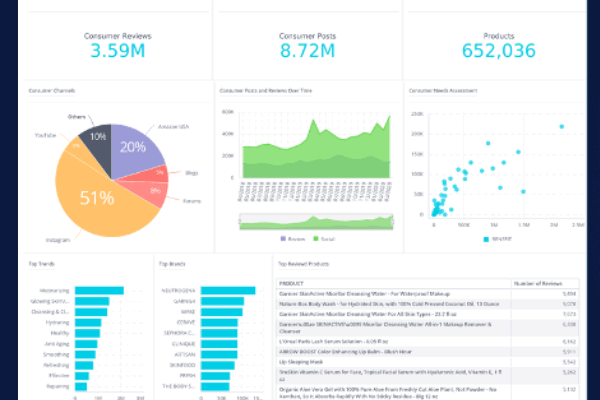Ever get an email from a brand with a subject line so relevant to your interests it’s almost a little bit scary? Yeah, a robot with AI data analytics probably wrote that.
For example, eBay uses AI technology to quickly write highly personalized emails to millions of users in a matter of minutes using the AI-powered copywriting tool Phrasee. And while a tool like this might have been the province only of brands with incredibly deep pockets even a couple of years ago, they’re now more widely available than ever before and early adopters absolutely stand to see the most benefit. As data analytics driven by artificial intelligence (AI) get more and more accurate, AI technology has also become more accessible than ever before.
The following are a few ways new innovations in technology are enabling the next wave of AI data analytics in order to help businesses implement more effective strategies with minimal (human) effort:
Data management is getting easier (and more affordable)
When using technology that was nearly unthinkable until recently, it’s easy to forget how much work has gone into developing that AI data analytics technology. For example, when Netflix recommends a great new series based on viewing history for specific users within the same accounts, that level of personalization has become fairly commonplace. Just a decade ago, Netflix was primarily a DVD delivery service, but after investing millions in developing AI data analytics, Netflix has become almost a completely different, and much more efficient, entertainment platform.
However, the problem for most companies has historically been coming up with the cash to explore AI solutions, though experts say that this hurtle is quickly becoming a challenge of the past as more prolific AI technology also means more affordable AI solutions.
“Data management is getting easier,” George Fraser, CEO of data integration company Fivetran, recently told TechRepublic, “Technology often goes the other way, it gets more complicated. But we’re seeing a winnowing and I think that’s significant and a good thing. The cost of the fundamental components has come way down.”
In the next few years, as AI data technology becomes more affordable than ever before, companies that have ignored its potential benefits might find themselves playing catchup to competitors who got on board earlier.
AI data analytics has made predicting trends simpler than ever before
For marketers, predicting trends has long been partially relying on fairly unscientific hunches, and when those hunches work out, it’s great. When they don’t, well, it’s occasionally a disaster, but even more commonly, a whole lot of marketing effort goes into a campaign that fades away almost as soon as it’s launched. But as AI technology becomes more widely available, many companies, especially retailers, will be better equipped to turn customer feedback into marketing strategy faster than ever before through the magic of natural language processing (NLP), according to those who are working to advance the technology.
“With bigger than ever state-of-the-art language models creating a huge buzz with their releases in 2020, NLP has now gained more attention,” Dinesh Sharma, Co-Founder & CTO of AskSid recently predicted for Analytics India Magazine. “Many more retail brands shall now tend to use AI-based market and consumer insights in the company’s decision making and marketing strategies. They will adopt Conversational AI systems to generate consumer-provided first-touch data to know what their consumers need and more importantly ‘why’!”
Imagine every question, comment, or complaint a customer had automatically becoming a data point readily available to the marketing team. Now that AI-powered chatbots are quickly becoming an essential customer service tool, those insights are closer than ever before.
AI data analytics will automate a lot of marketing’s repetitive tasks
And as AI technology around NLP begins to close the feedback loop for marketers, AI could also mean faster, easier solutions for some of the most tedious aspects of many marketers job—those constant little tweaks and adjustments that need to be made to marketing materials, including logo updates, slight changes to copy, and all manner of other frustrating little tasks that take a lot of time. In fact, CMSWire predicts that very soon, AI-driven technologies will make editing marketing materials as simple as the find and replace features in word processing programs:
“As AI begins to understand design files, like InDesign and Photoshop, AI models will be able to learn to make these kinds of updates instantaneously,” writes Carrie Hill. “Similar to the find-and-replace feature available for Word documents, AI will be able to recognize a new version of an asset — for example, a logo — and replace the previous version across all design files. These revisions could then automatically be replaced in the organization’s digital asset management system as a new version.”
When it comes to AI-powered tools, the question is quickly shifting from “What are you waiting for?” to “What took you so long?”






